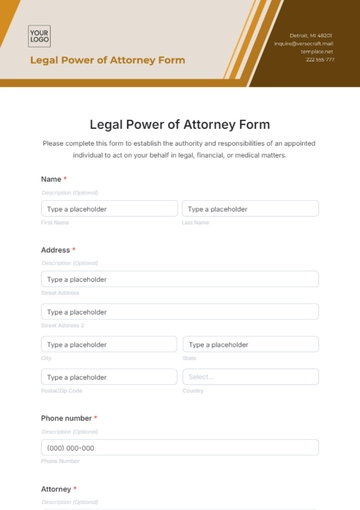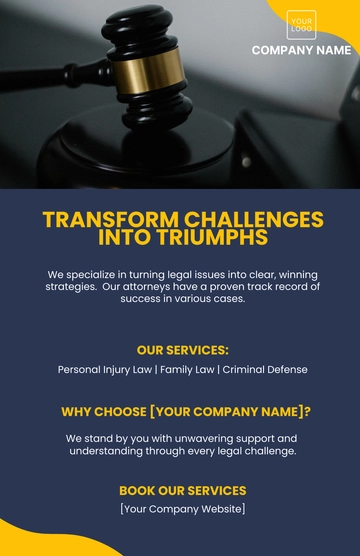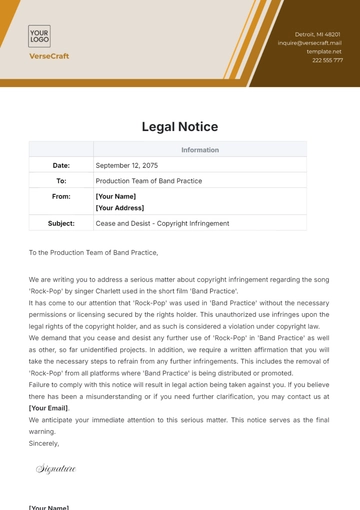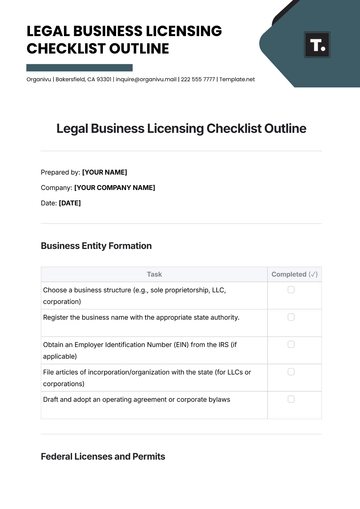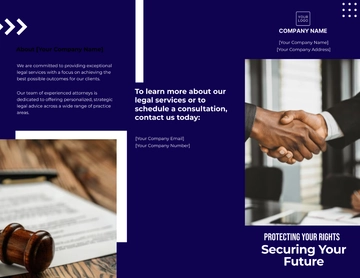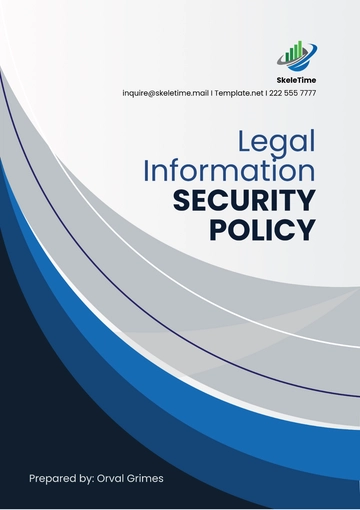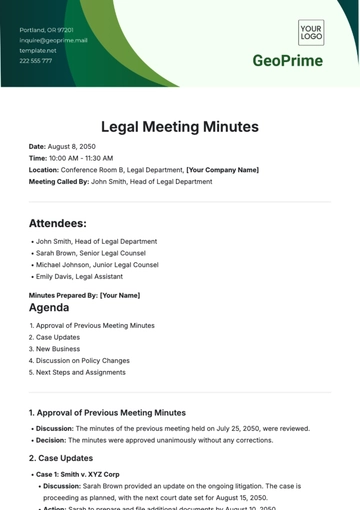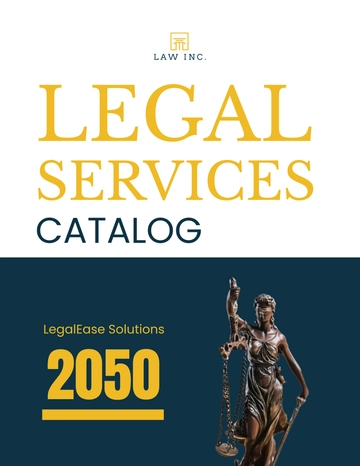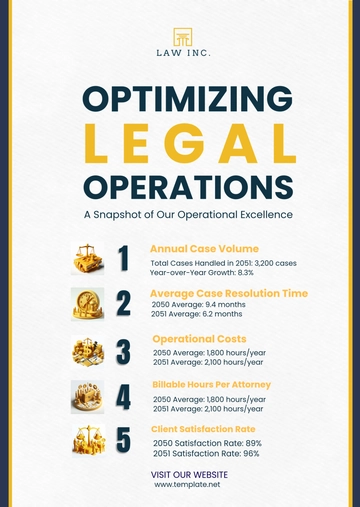Free Legal Client Portfolio Management Guide

I. Introduction
A. Purpose of the Guide
This guide is designed to provide our team with comprehensive strategies, practices, and tools for managing and enhancing our client portfolio. It aims to streamline our approach to client relationship and portfolio management, ensuring we deliver consistent, high-quality legal services tailored to meet the diverse needs of our clients.
B. Overview of Client Portfolio Management
Client portfolio management involves the strategic oversight of all client relationships and legal projects. It encompasses understanding client needs, managing legal services delivery efficiently, and fostering strong, enduring client relationships. This holistic approach ensures that we not only meet but exceed client expectations, thereby strengthening our position in the legal market.
C. Importance of Strategic Client Management in Legal Practice
Strategic client management is crucial for our success and growth. It enables us to build trust and loyalty with our clients, identify opportunities for expanding our services, and manage resources more effectively. By prioritizing client satisfaction and value delivery, we enhance our reputation, attract new business, and maintain a competitive edge.
II. Understanding Client Portfolios
A. Definition of a Client Portfolio
A client portfolio comprises all the clients that we serve, encompassing a wide range of industries, legal needs, and service requirements. It represents the totality of our client relationships and is a critical asset that requires careful management and strategic development to support our firm's objectives and growth aspirations.
B. Categorizing Clients in the Portfolio
To manage our client portfolio effectively, we categorize clients based on various factors such as industry, service type, and revenue. This categorization helps us tailor our services, allocate resources efficiently, and identify opportunities for business development.
Category | Description |
Industry | Clients are grouped by their industry sector to tailor legal advice and services to industry-specific challenges and opportunities. |
Service Type | Classification based on the types of legal services utilized, allowing us to specialize and innovate in our service delivery. |
Revenue | Organizing clients by revenue contribution helps prioritize resource allocation and identify key accounts for strategic development. |
C. Assessing the Health of Client Relationships
Regular assessment of the health of our client relationships is vital for ensuring client satisfaction and identifying areas for improvement. We use several criteria to evaluate the strength and sustainability of these relationships. These include:
Client Satisfaction: Feedback and surveys provide direct insights into client satisfaction levels.
Engagement Frequency: The regularity of client interactions and projects indicates the depth of the relationship.
Service Diversity: The range of services utilized by a client reflects the breadth of the relationship.
Client Retention: Longevity of client relationships signifies trust and satisfaction.
Revenue Growth: Increases in revenue from a client over time suggest a healthy, expanding relationship.
III. Client Relationship Management Strategies
A. Building and Maintaining Strong Client Relationships
Cultivating strong client relationships is fundamental to our success. It involves consistent effort and a strategic approach to understanding and meeting our clients' needs. Strong relationships are built on trust, communication, and delivering value beyond legal counsel.
Regular Check-Ins: Schedule consistent touchpoints with clients to discuss ongoing matters and future needs.
Personalized Service: Tailor our approach to match the unique preferences and expectations of each client.
Value-Added Advice: Offer proactive legal and business insights that support our clients' goals.
B. Tailoring Communication and Services to Meet Client Needs
Effective communication is key to client satisfaction. We strive to ensure our communications are clear, timely, and in line with client preferences. Tailoring our services involves understanding the specific challenges and objectives of each client and adapting our offerings accordingly.
Client Preferences: Identify and accommodate individual client communication preferences, whether it be email, phone, or in-person meetings.
Customized Solutions: Develop and propose legal solutions that are specifically designed to meet the unique needs of each client.
Feedback Loops: Establish mechanisms for regular feedback from clients to continuously refine and improve our service delivery.
C. Utilizing CRM Tools and Software for Effective Management
Leveraging technology, specifically CRM tools and software, enables us to manage client information, interactions, and services more efficiently and effectively. These tools help us keep track of client data, preferences, and history, ensuring nothing falls through the cracks.
Centralized Information: Use CRM tools to maintain a centralized repository of client information and interactions.
Activity Tracking: Track all client-related activities, including communications, meetings, and legal filings, to ensure comprehensive service management.
Data Analysis: Analyze data from CRM tools to identify trends, opportunities for engagement, and areas for service improvement.
IV. Service Delivery Optimization
A. Strategies for Improving Legal Service Delivery
Optimizing service delivery is crucial for enhancing client satisfaction and operational efficiency. This involves adopting innovative approaches, leveraging technology, and streamlining processes to deliver legal services more effectively.
Strategies for Improvement:
Process Standardization: Develop and implement standard operating procedures for common legal tasks to improve efficiency and consistency.
Technology Integration: Incorporate legal technology tools to automate routine tasks and enhance service delivery.
Client-Centric Design: Design services and processes with a focus on the client experience, ensuring that our service delivery is both efficient and responsive to client needs.
B. Implementing Project Management Principles in Legal Work
Project management principles can significantly improve the planning, execution, and delivery of legal services. By adopting these principles, we can ensure that legal projects are completed on time, within budget, and to the satisfaction of our clients.
Clear Objectives: Define clear objectives and outcomes for each legal project.
Resource Planning: Allocate resources effectively, including personnel and technology, to meet project demands.
Timeline Management: Develop and adhere to realistic timelines, using project management software to track progress.
Risk Assessment: Identify potential risks and challenges early in the project and develop strategies to mitigate them.
C. Enhancing Efficiency and Value
Outsourcing non-core legal processes and embracing legal technology can significantly enhance our efficiency and the value we deliver to clients.
Legal Process Outsourcing (LPO): Utilize LPO for routine or specialized tasks that can be more cost-effectively handled outside the firm.
Adopt Legal Tech: Implement legal technology solutions, such as document automation, e-discovery tools, and AI-based legal research, to streamline operations.
Continuous Innovation: Stay abreast of emerging legal technologies and assess their potential to enhance service delivery and client satisfaction.
V. Financial Management of Client Portfolios
A. Pricing Strategies for Legal Services
Our approach to pricing is designed to be competitive, transparent, and reflective of the value we provide to our clients. We offer a variety of pricing strategies to accommodate the diverse financial needs and preferences of our clients, ensuring that our services are accessible and aligned with their expectations.
Strategy | Description |
Hourly Billing | Charges based on the actual time spent on a client's matter. |
Flat Fee Arrangements | A fixed fee for a defined piece of work, offering predictability. |
Contingency Fees | Fees contingent upon the successful outcome of a case. |
Retainer Models | Upfront payments for ongoing services, providing continuous legal support. |
Value-Based Pricing | Pricing based on the value and outcomes delivered to the client, rather than the time spent. |
B. Managing Client Budgets and Billing Arrangements
Effective management of client budgets and billing arrangements is crucial for maintaining positive client relationships and ensuring financial sustainability. We aim to provide clear, comprehensive billing practices that align with client expectations and firm policies.
Transparency: Clearly communicate billing practices and arrangements upfront.
Customization: Tailor billing arrangements to match client needs and preferences.
Monitoring: Regularly monitor and review client budgets against ongoing work to prevent billing surprises.
Flexibility: Be willing to adjust billing practices as needed to accommodate client circumstances.
C. Financial Reporting and Analysis for Portfolio Management
Regular financial reporting and analysis are vital for managing our client portfolio effectively. This involves tracking revenue, profitability, and other key financial metrics by client or client category. Insights gained from this analysis help us make informed decisions about resource allocation, pricing strategies, and business development efforts.
VI. Risk Management in Client Portfolios
A. Identifying and Managing Risks Associated with Client Work
Managing risks associated with client work is essential for protecting our clients and our firm. This requires a proactive approach to identifying potential legal and financial risks and implementing strategies to mitigate them.
Legal Compliance: Ensure all client work complies with relevant laws and regulations.
Conflict of Interest: Identify and manage potential conflicts of interest.
Data Security: Protect client confidentiality and secure personal and sensitive information.
Financial Viability: Assess the financial stability of clients to manage credit risk.
B. Compliance and Ethical Considerations in Client Management
Compliance and ethical integrity are non-negotiable elements of our practice. We adhere to the highest standards of legal ethics and compliance in all client interactions and management practices.
Confidentiality: Maintain strict confidentiality of all client information.
Transparency: Ensure all client dealings are conducted with full transparency and honesty.
Professional Conduct: Uphold the highest standards of professional conduct and legal practice.
Regulatory Compliance: Stay informed and compliant with all relevant legal and regulatory requirements.
C. Developing Contingency Plans for Client-Related Risks
Preparing for unforeseen events is a critical part of risk management. We develop contingency plans for various client-related risks to ensure our ability to respond effectively and protect our clients' interests.
Risk Type | Contingency Plan |
Data Breach | Implement immediate response measures, including notification protocols and mitigation strategies. |
Conflict of Interest | Procedures for recusal and referral to ensure ethical compliance. |
Financial Instability | Flexible billing and payment solutions to accommodate client needs during financial challenges. |
Legal Compliance Issues | Regular legal audits and updates to practices to address changes in law or regulation. |
VII. Client Feedback and Continuous Improvement
A. Methods for Gathering Client Feedback
Collecting client feedback is a critical component of our commitment to continuous improvement and client satisfaction. We utilize various methods to ensure we are capturing our clients' experiences, perceptions, and suggestions for improvement comprehensively.
Client Surveys: Deploy electronic or paper surveys post-case or at regular intervals to gauge satisfaction.
Reviews: Encourage clients to leave reviews on our website or third-party platforms to gather unfiltered feedback.
Client Meetings: Conduct formal or informal meetings dedicated to discussing the client's experience and gathering feedback.
Feedback Forms: Provide clients with feedback forms at the conclusion of their case or service period.
B. Analyzing Feedback to Identify Areas for Improvement
Analyzing client feedback allows us to pinpoint specific areas where our services or interactions can be enhanced. This involves aggregating and reviewing feedback systematically to identify trends, common issues, or standout suggestions that can guide our improvement efforts.
C. Implementing Changes Based on Client Feedback
Acting on the insights gained from client feedback is essential for driving continuous improvement. We prioritize identified areas for enhancement and develop action plans to address them. This might involve revising processes, investing in training, or introducing new services. By closing the loop and informing clients about the changes made in response to their feedback, we demonstrate our commitment to their satisfaction and to the quality of our service.
VIII. Expanding the Client Portfolio
A. Strategies for Acquiring New Clients
Expanding our client portfolio is key to our growth and sustainability. We adopt a multifaceted approach to attract new clients while deepening relationships with existing ones.
Referral Programs: Encourage current satisfied clients to refer new clients through incentives or recognition.
Cross-Selling Services: Identify opportunities to offer additional services to existing clients.
Market Penetration: Target new market segments or industries where our expertise can be leveraged.
Digital Marketing: Utilize SEO, content marketing, and social media to reach potential clients.
B. Networking and Business Development Techniques
Effective networking and business development are crucial for expanding our client base and building lasting relationships in the industry.
Industry Events: Participate in or sponsor industry events, seminars, and conferences to build visibility and connections.
Professional Associations: Engage with professional associations to network with peers and potential clients.
Online Networking: Leverage LinkedIn and other professional networks for outreach and engagement.
Community Involvement: Participate in community events and pro bono work to build local connections and demonstrate our commitment to community service.
C. Evaluating and Integrating New Clients into the Portfolio
The integration of new clients into our portfolio is carefully managed to ensure a seamless transition and alignment with our strategic goals. This involves evaluating potential clients for fit, understanding their legal needs and expectations, and tailoring our onboarding process to address these effectively. Through a structured onboarding process, we establish the foundation for a strong, mutually beneficial relationship from the start.
IX. Training and Development
A. Identifying Skills and Competencies
Effective client portfolio management demands a specific set of skills and competencies that enable our team to manage client relationships and legal projects efficiently. These skills are essential for delivering high-quality legal services, ensuring client satisfaction, and achieving strategic business objectives.
Client Relationship Management
Strategic Thinking
Financial Acumen
Risk Management
Technological Proficiency
B. Training Programs and Resources for Lawyers and Support Staff
To ensure our team possesses the necessary skills for effective portfolio management, we offer a variety of training programs and resources. These programs are designed to enhance the capabilities of our lawyers and support staff, keeping them abreast of the latest practices in client management and service delivery.
Program | Frequency | Duration |
Client Relationship Management | Annually | 2 Days |
Financial Management for Legal Professionals | Biannually | 1 Day |
Risk Management in Legal Practice | Annually | 1 Day |
Technology Training for Legal Practice | As needed | Varies |
Strategic Planning and Portfolio Management | Biannually | 2 Days |
X. Monitoring and Evaluating Portfolio Performance
A. Key Performance Indicators (KPIs)
Monitoring and evaluating our client portfolio's performance is critical for understanding our effectiveness in managing client relationships and legal projects. We use a set of Key Performance Indicators (KPIs) to measure our success and identify areas for improvement.
KPI | Target Value |
Client Retention Rate | >90% |
Client Satisfaction Score | >85% |
Average Revenue per Client | Increase by 5% annually |
New Client Acquisition Rate | >10% annually |
Client Portfolio Diversification | Maintain balanced mix |
B. Regular Review and Assessment of Portfolio Performance
Our client portfolio's performance is reviewed on a quarterly basis. This regularity ensures that we are promptly identifying any trends, challenges, or opportunities. During these reviews, we assess performance against our KPIs, gather insights from client feedback, and analyze financial metrics.
C. Strategies for Addressing Underperformance
Addressing areas of underperformance and leveraging successful strategies are key components of our continuous improvement process.
Performance Improvement Plans: For underperforming segments, develop and implement targeted plans addressing specific issues.
Best Practice Sharing: Share successful strategies and practices across teams to elevate overall performance.
Client Retention Initiatives: Implement targeted initiatives to improve client satisfaction and retention rates.
Training and Development: Offer additional training or resources to address skill gaps contributing to underperformance.
Strategic Business Development: Focus efforts on areas with potential for growth and expansion, informed by portfolio performance analysis.
- 100% Customizable, free editor
- Access 1 Million+ Templates, photo’s & graphics
- Download or share as a template
- Click and replace photos, graphics, text, backgrounds
- Resize, crop, AI write & more
- Access advanced editor
Optimize your client portfolio management with the Legal Client Portfolio Management Guide Template from Template.net. This guide is the ultimate resource for legal professionals, offering editable and customizable features to suit any practice. Editable in our AI Editor tool, it simplifies portfolio oversight, ensuring strategic alignment and client satisfaction.
